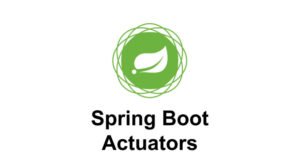Introduction:
Spring Boot has become a go-to framework for building Java-based web applications due to its ease of use, convention over configuration approach, and comprehensive ecosystem. Among the many features that Spring Boot offers, Spring Boot DevTools stands out as a powerful tool for enhancing development productivity. In this article, we’ll delve into what Spring Boot DevTools is, its key features, and how it can streamline the development workflow.
What is Spring Boot DevTools? Spring Boot DevTools is a set of development tools designed to improve the developer experience when working on Spring Boot applications. It offers a range of features that automate repetitive tasks, speed up the development cycle, and enhance the overall productivity of developers.
Key Features of Spring Boot DevTools:
- Automatic Application Restart:
- One of the standout features of Spring Boot DevTools is automatic application restart. DevTools monitors the classpath for changes, such as modifications to Java classes or resource files, and triggers an automatic restart of the application when changes are detected. This eliminates the need for manual redeployment and dramatically reduces development turnaround time.
- Live Reload:
- Spring Boot DevTools also provides live reload functionality, allowing developers to see changes reflected in the browser immediately without the need to manually refresh the page. Live reload works by injecting JavaScript code into the HTML pages served by the application, which triggers a reload whenever changes are detected. This feature greatly improves the developer experience by providing instant feedback on code changes.
- Remote Development Support:
- DevTools includes support for remote development, enabling developers to work on Spring Boot applications deployed on remote servers or virtual machines. With remote development support, developers can make changes to the codebase locally and have the changes automatically synchronized with the remote server, facilitating collaborative development and debugging.
- Built-in Developer Tools:
- In addition to automatic restart and live reload, Spring Boot DevTools comes with built-in developer tools that provide insights into the application’s runtime environment and configuration. These tools include the ability to view and modify application properties, inspect the Spring ApplicationContext, and access the embedded H2 database console for debugging purposes.
- Enhanced Error Reporting:
- DevTools improves error reporting by providing more detailed error messages and stack traces when exceptions occur during application startup or runtime. This makes it easier for developers to diagnose and troubleshoot issues, leading to faster resolution of bugs and improved software quality.
How to Use Spring Boot DevTools:
Using Spring Boot DevTools is straightforward and requires minimal configuration. To enable DevTools in a Spring Boot application, simply include the devtools dependency in the project’s build configuration (e.g., Maven or Gradle). Once DevTools is included, it automatically integrates with the application and provides its features out of the box.
<dependency>
<groupId>org.springframework.boot</groupId>
<artifactId>spring-boot-devtools</artifactId>
<scope>runtime</scope>
</dependency>
Conclusion:
Spring Boot DevTools is a valuable addition to the Spring Boot ecosystem, offering a range of features that enhance development productivity and streamline the development workflow. By automating tasks like application restart, providing live reload functionality, and offering built-in developer tools, DevTools empowers developers to iterate quickly, debug efficiently, and deliver high-quality software with confidence. Whether you’re a seasoned Spring Boot developer or just getting started, incorporating Spring Boot DevTools into your development toolkit can significantly boost your productivity and make the development process more enjoyable.





